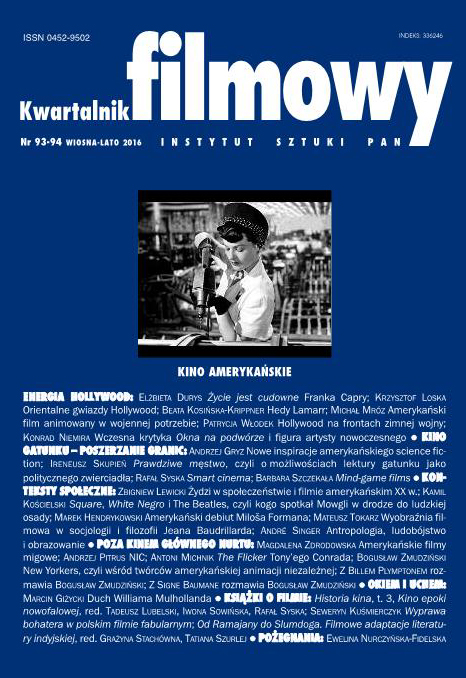Między op-em, epi i Fluxusem. „The Flicker” Tony’ego Conrada jako przykład artystycznej strategii symulacji działania substancji psychoaktywnych
Between Op, Epi And Fluxus. “The Flicker” by Tony Conrad as an Example of Artistic Strategy of Simulating the Effect of Psychoactive Substances
Author(s): Antoni MichnikSubject(s): Fine Arts / Performing Arts, Film / Cinema / Cinematography
Published by: Instytut Sztuki Polskiej Akademii Nauk
Keywords: Conrad Tony; New York underground scene
Summary/Abstract: The text deals with “The Flicker” (1966), the cinematographic debut by the recently deceased Tony Conrad – an outstanding musician, a courageous director, the major character of the New York underground of the 1960s. The author presents a film key to the American avant-garde of the 1960s against the backdrop of the wider cultural trends of the era: contemporary phenomena in visual arts, themes of American mass culture, and experimental New York musical scene. The wide panorama of cultural phenomena forms a new aesthetics of art directly impacting the viewer, where the impact is modelled after the effect of psychoactive substances. This aesthetics arises out of the ideas of John Cage, Norbert Weiner and William Burroughs. The author in the final part of the article compares “The Flicker” with other experimental films of the period, in particular those made within the Fluxus movement.
Journal: Kwartalnik Filmowy
- Issue Year: 2016
- Issue No: 93-94
- Page Range: 253-268
- Page Count: 16
- Language: Polish

